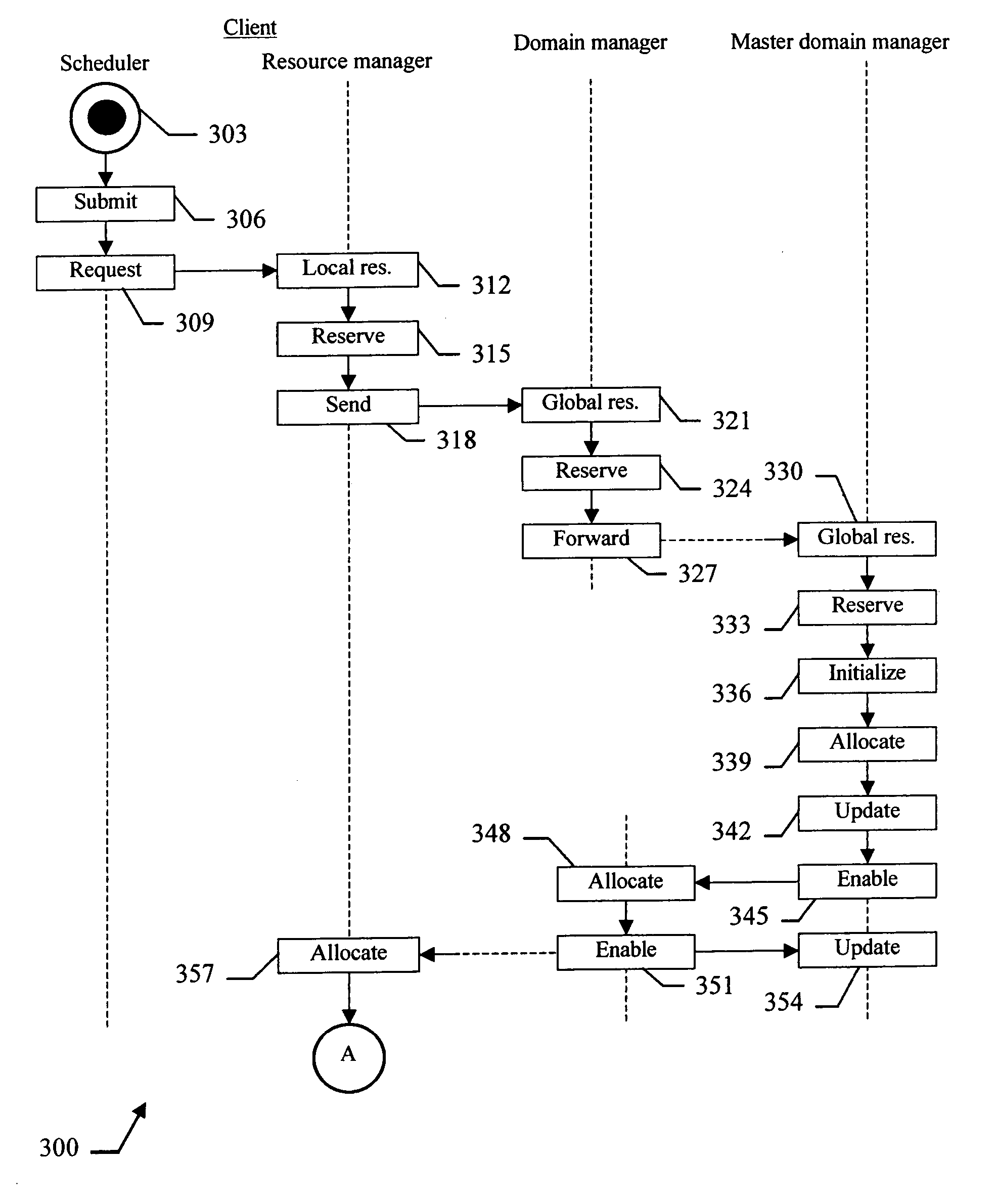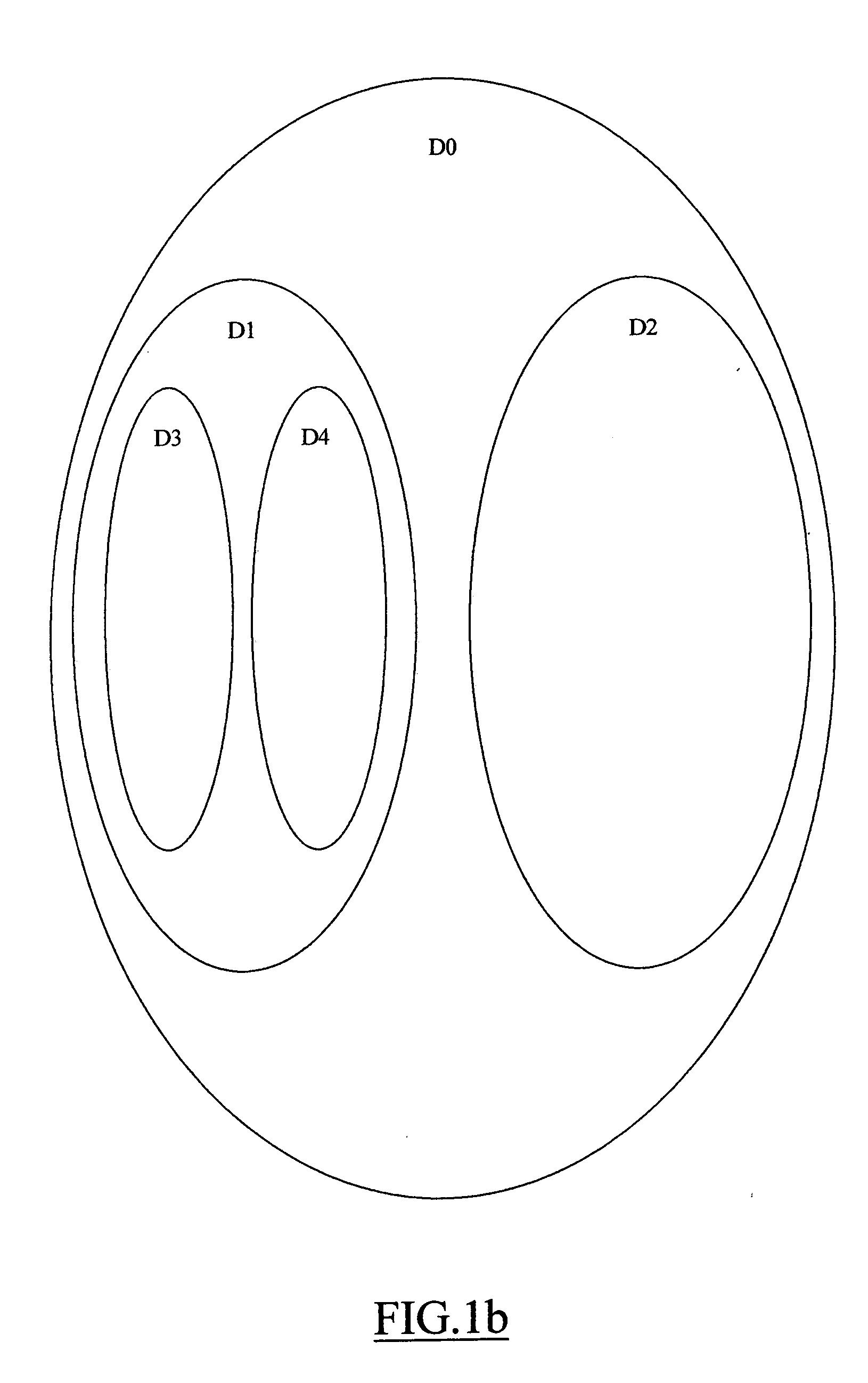Method for allocating resources in a hierarchical data processing system
- Summary
- Abstract
- Description
- Claims
- Application Information
AI Technical Summary
Benefits of technology
Problems solved by technology
Method used
Image
Examples
Embodiment Construction
)
[0025] With reference in particular to FIG. 1a, a data processing system 100 with distributed architecture (typically INTERNET-based) is shown. The system 100 includes a plurality of computers, which are arranged into a hierarchical structure. For this purpose, the computers are logically organized into a tree, with each computer that defines a corresponding node.
[0026] Particularly, a node MOO defines a root of the tree. One or more intermediate nodes (denoted with MOh, where h=1, . . . , d1) depend on the root node M00. In turn, each intermediate node M0h may have one or more dependent intermediate nodes (denoted with Mhk, where k=d1+1, . . . , d2), and so on. Therefore, if the tree has n levels a generic (non-leaf) node can be identified as Mxy (where the index y=1, . . . , dn is a progressive number denoting the node and the index x specifies its parent node, with x=0 for the root node). Each node Mxy may have one or more dependent leaf nodes (denoted with Cyi, where i=0, . . ...
PUM
 Login to View More
Login to View More Abstract
Description
Claims
Application Information
 Login to View More
Login to View More - Generate Ideas
- Intellectual Property
- Life Sciences
- Materials
- Tech Scout
- Unparalleled Data Quality
- Higher Quality Content
- 60% Fewer Hallucinations
Browse by: Latest US Patents, China's latest patents, Technical Efficacy Thesaurus, Application Domain, Technology Topic, Popular Technical Reports.
© 2025 PatSnap. All rights reserved.Legal|Privacy policy|Modern Slavery Act Transparency Statement|Sitemap|About US| Contact US: help@patsnap.com



